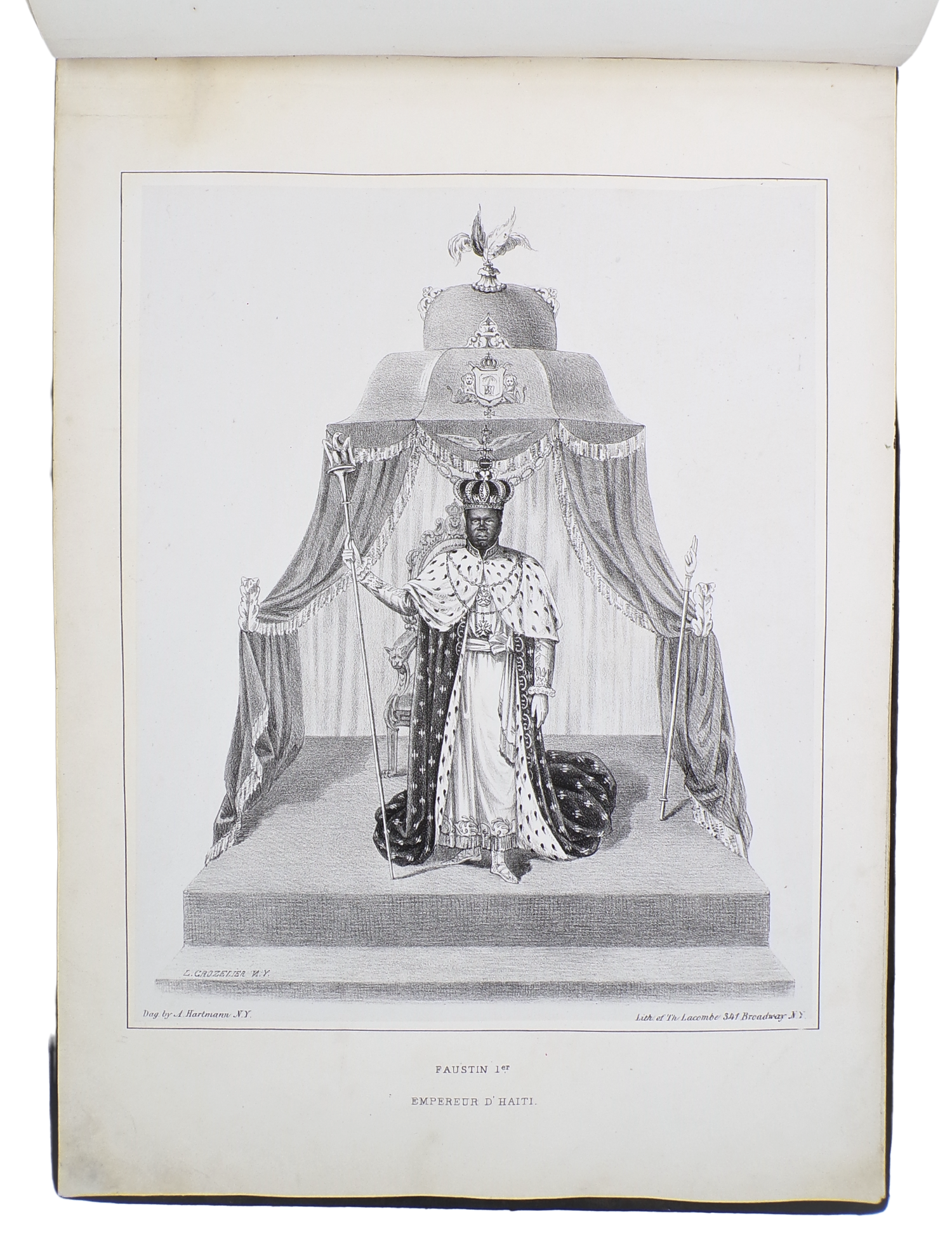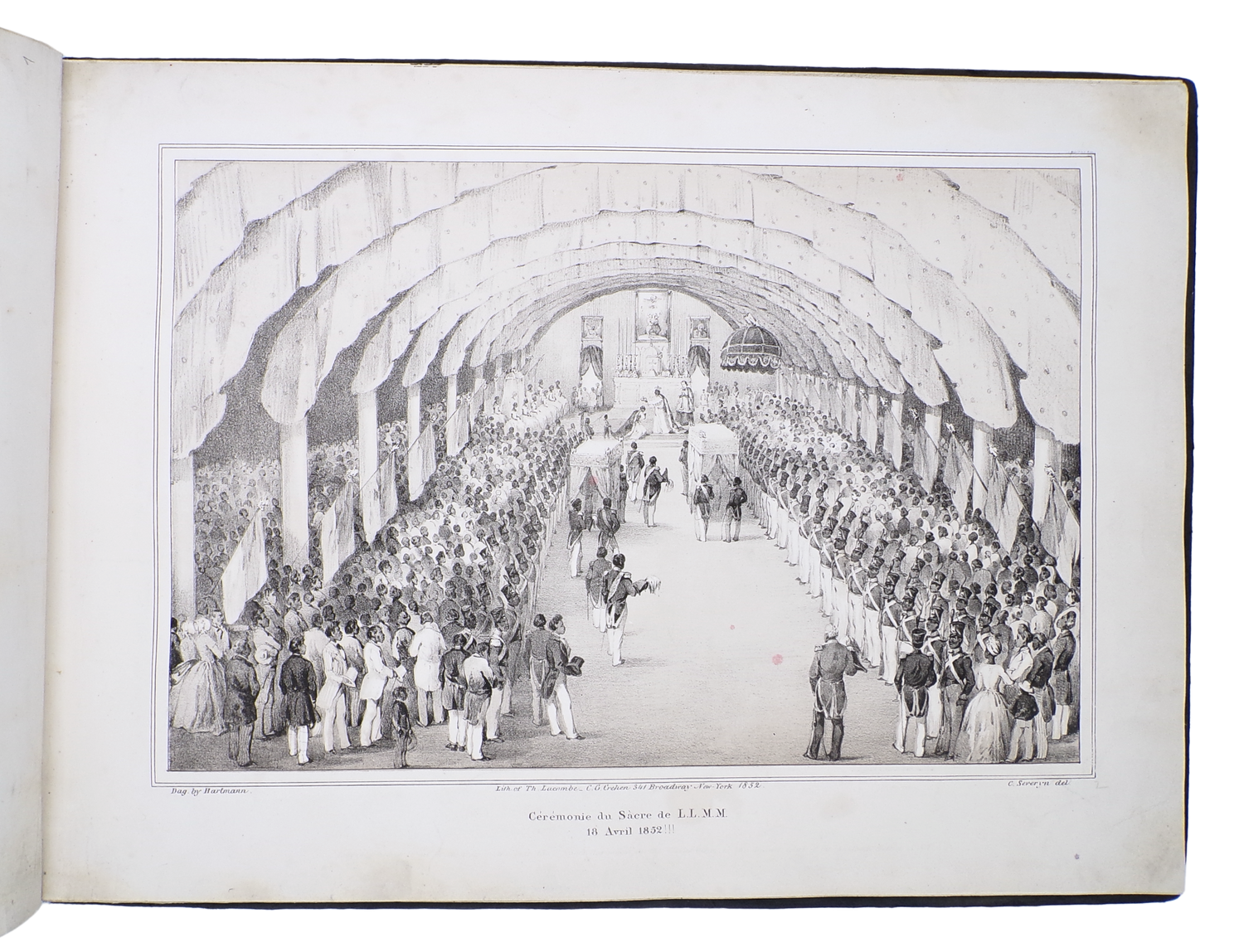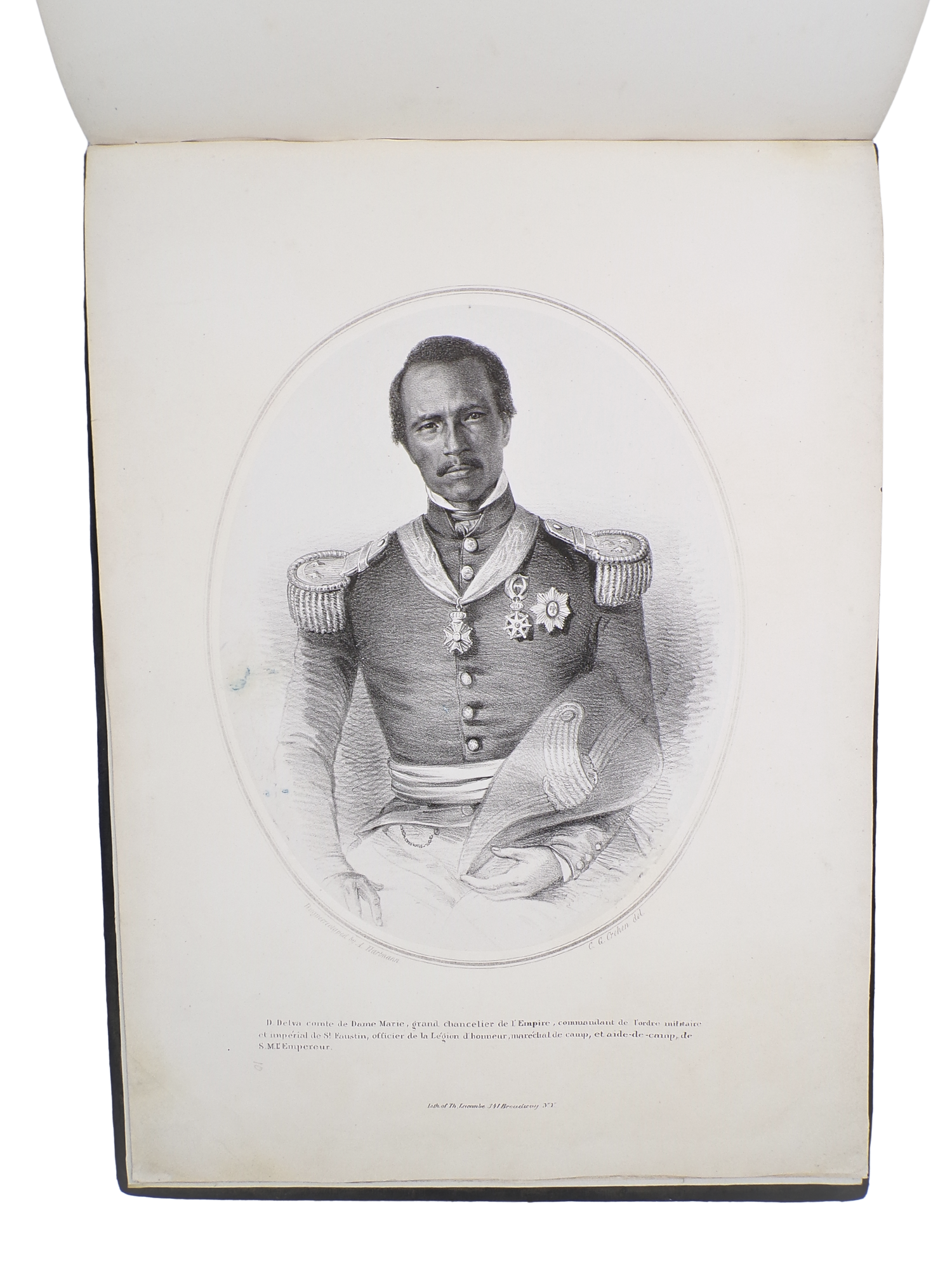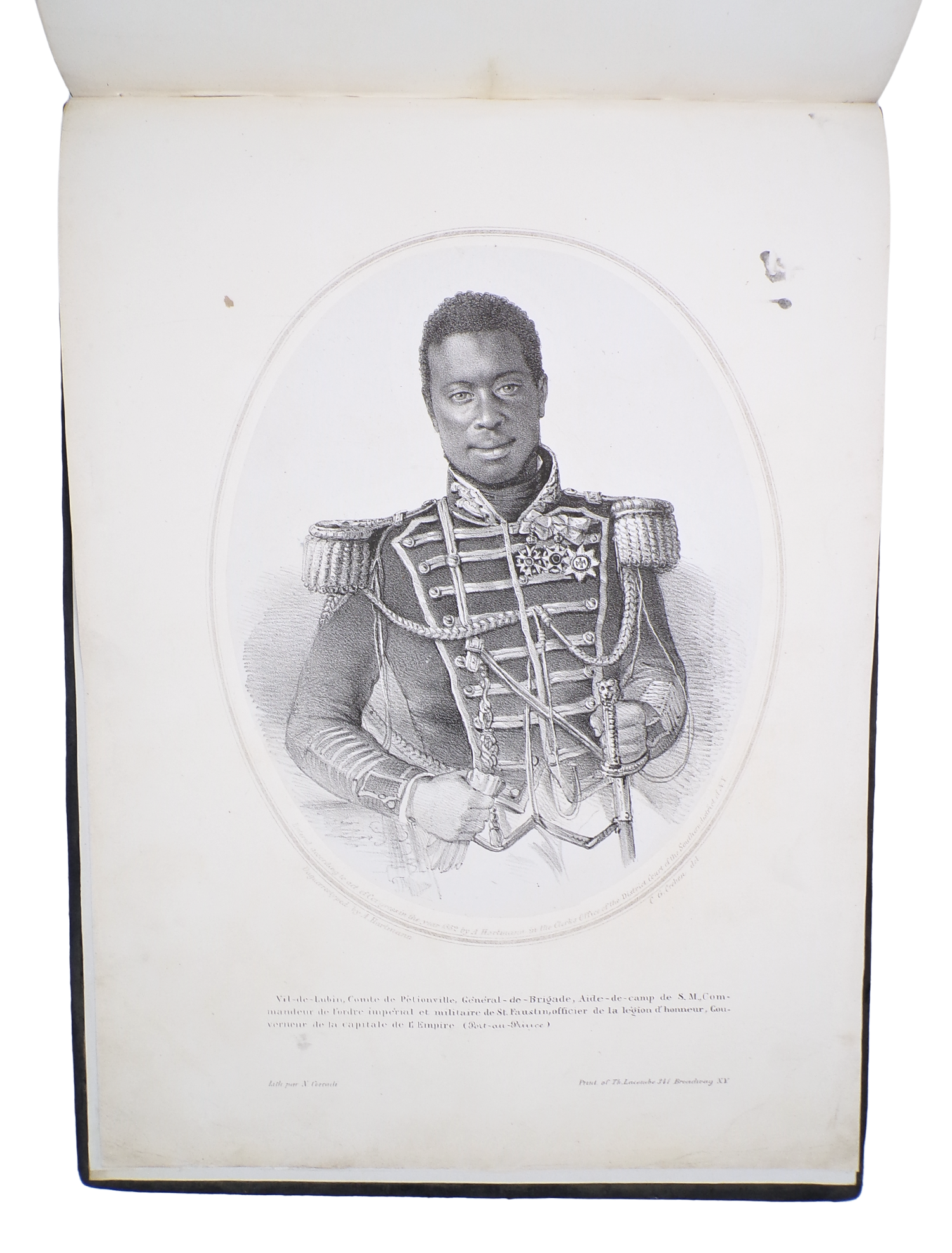A magnificent display of Black sovereign power, made in New York
- Regular price
- €0,00 EUR
- Regular price
-
- Sale price
- €0,00 EUR
- Unit price
- per
A. H. Hartmann [daguerreotypes, publisher]; Charles G. Crehen, Francis D'Avignon, Charles Severyn [lithographs]; Faustin I of the Empire of Haiti [= Faustin-Élie Soulouque] (1782-1867).
Liberté. Indépendance. Empire D'Haïti. [on cover:] Album Impérial d'Haïti.
New York, published by A. Hartmann; printed by Th. Lacombe & C. G. Crehen, 341 Broadway and F. d’Avignon, 323 Broadway, 1852.
Folio oblong (31 x 42). With 12 lithographs printed chine-collé, captions printed separately, on thick wove paper. Daguerreotypes by A. Hartmann, lithographs drawn in New York by L. Crozelier, N. Corradi, C. Severyn, C.G. Crehen (also printer), and J. d’Avignon (also printer).
Original blind-stamped black percaline cloth with gold-tooled title on front cover.
A majestic album of extremely rare early images of Black people in sovereign power. Consisting of 12 staggering lithographed plates made in New York after daguerreotype pictures taken in Haiti of the coronation of the first Emperor of Haiti, Faustin I. A very rare complete copy in its original binding.
Haiti became the first nation of formerly enslaved people to gain independence after a prolonged struggle against French colonial rule. The ensuing complex power struggles led to various self-declared sovereignties, including the reign of Faustin I, who seized power through bloodshed and cruelty.
The pictures for this album were taken by traveling daguerreotypist A. Hartmann in 1852, and these must be some of the earliest pictures ever taken in Haiti. After capturing the daguerreotypes, Hartmann promptly transported them to New York, where he commissioned several lithographers on Broadway to transform the photos into prints. “Their efforts produced a final product that is nothing short of magnificent.” (Salt).
The album seems to be a project of Hartmann himself, rather than a commission of the Emperor, because in a letter kept at Wellesley College he writes that “The Album of Hayti has been published by myself upon my own Daguerreotype originals. It is even now, although Modern, a rare book, as the stones have been destroyed, and only 500 copies have been taken from them.”
The importance of these images can hardly be overstated, as extensively analyzed in Karen N. Salt’s *Migrating Images of the Black Body Politic and the Sovereign State* (2017):
“[The album] does much more than offer illustrative proof that the ceremony happened. […] The construction of the album, its circulation of national identity, and symbols of power are just as important as the actual composition of the images contained within it. Coming at an important time in the evolution of daguerreotypes, the album represents both the use of new technological inventions in the recording of Black power and the important contribution of blackness as a part of the image content and its capital investiture. […] Albums would be the grand example of the documentary power of photography to render the black world through the eyes of those who lived it as opposed to the way some racist person had imagined. […] In all, the album makes up an unparalleled resource for those interested in understanding the migration of images of Black statehood and power.”
Migratory photographer A.H. Hartmann traveled extensively in the Caribbean region offering his services as a photographer. He worked in Suriname, British Guiana, Dominican Republic, Puerto Rico, and of course Haiti where Faustin I photographed the coronation in 1852. H.A. was the son of Hippolyte Hartmann (1818-1902), a photographer who settled in Martinique, where he ran a photo studio in St. Pierre and portrayed several Black people. He also took the scenic photographs for the spectacular lithographed Album Martiniquais (Paris: Lemercier, c.1860).
List of plates:
1. Coat of arms of the Empire of Haiti.
2. Coronation Ceremony of LLMM April 18, 1852.
3. Coronation Ceremony April 18, 1852.
4. Faustin I, Emperor of Haiti.
5. Empress Adelina.
6. Princess Madame Olive, daughter of LLMM.
7. H. Ex. J. Paul, Duke of Morin, Grand Chamberlain & aide-de-camp of honor to HM the Emperor.
8. SEL Dufrene, Duke of Tiburon, Minister of War, Navy and External Relations.
9. H. Ex. Marshal-de-Camp Louis-Etienne Félicité de Salomon Jeune, Duke of Saint-Louis-du-Sud, Minister of Finance and Trade.
10. D. Delva, Count of Dame Marie, Grand Chancellor of the Empire.
11. SAI Prince Mainville Joseph, Field Marshal, son of Prince Jean Joseph [and] SAI Prince Jean Joseph, Duke of Port de Paix, brother of HM the Emperor.
12. Vil-de-Lubin, Count of Pétionville, Governor of the capital of the Empire (Port-au-Prince).
Literature:
Karen N. Salt, “Migrating Images of the Black Body Politic and the Sovereign State: Haiti in the 1850s” in: Leigh Raiford, Heike Raphael-Hernandez, *Migrating the Black Body: The African Diaspora and Visual Culture*, University of Washington Press, 2017, pp. 52-70.
Elbert Collection (Wellesley College Library). [Wellesley College Library](https://repository.wellesley.edu/object/wellesley35738). Accompanied by a letter from A. Hartmann to Mr. Paxton, dated June 12, 1857, stating that "The Album of Hayti has been published by myself upon my own Daguerreotype originals. It is even now, although Modern, a rare book, as the stones have been destroyed, and only 500 copies have been taken from them. I do then certify the genuineness of the publications, and am ready to show the original Daguerreotypes from which it has been published."
Condition: Some scattered tiny stains. A couple of marginal repairs. Slight thumbing on corners and edges. Otherwise in very good condition.
Couldn't load pickup availability
Share


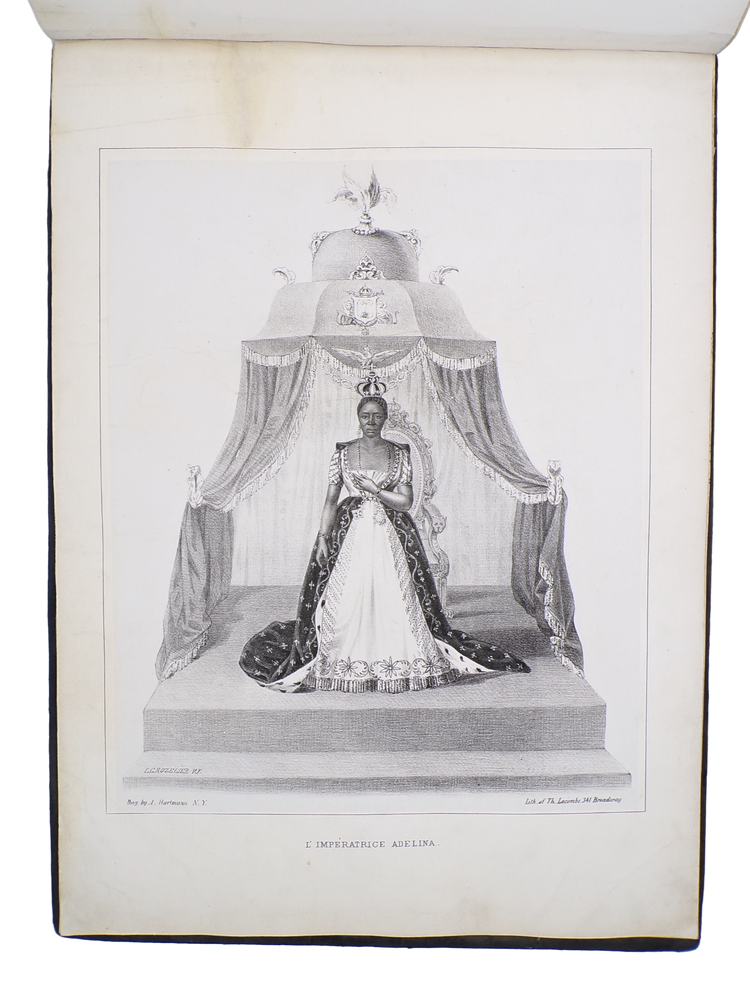

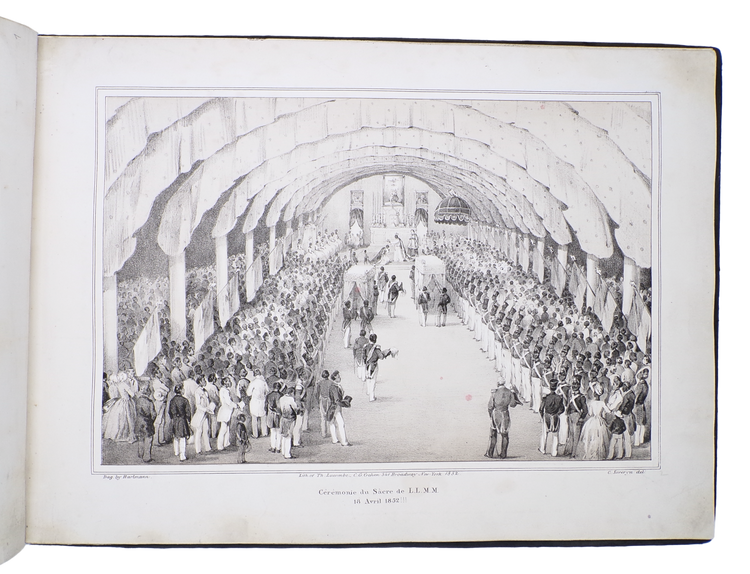
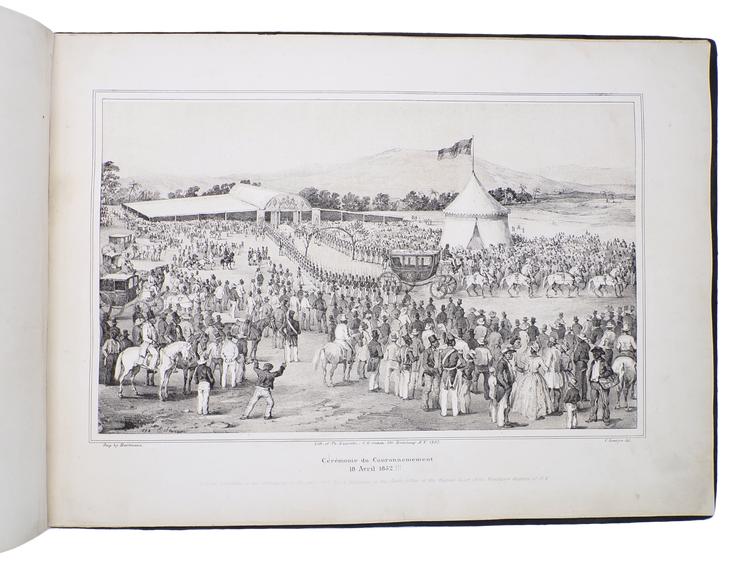

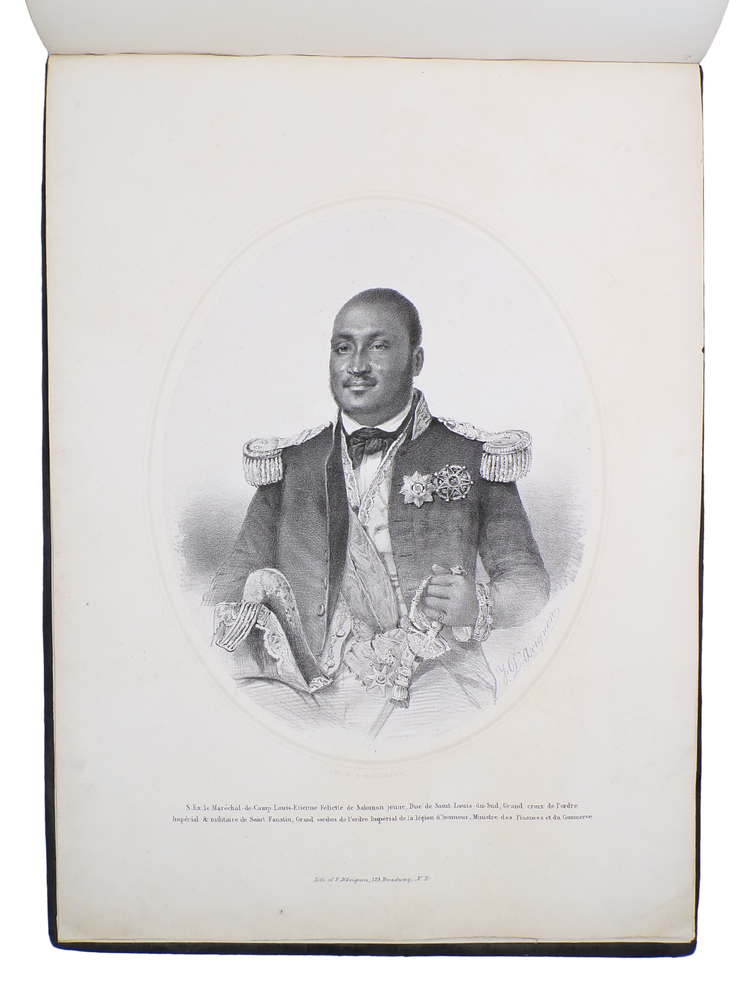


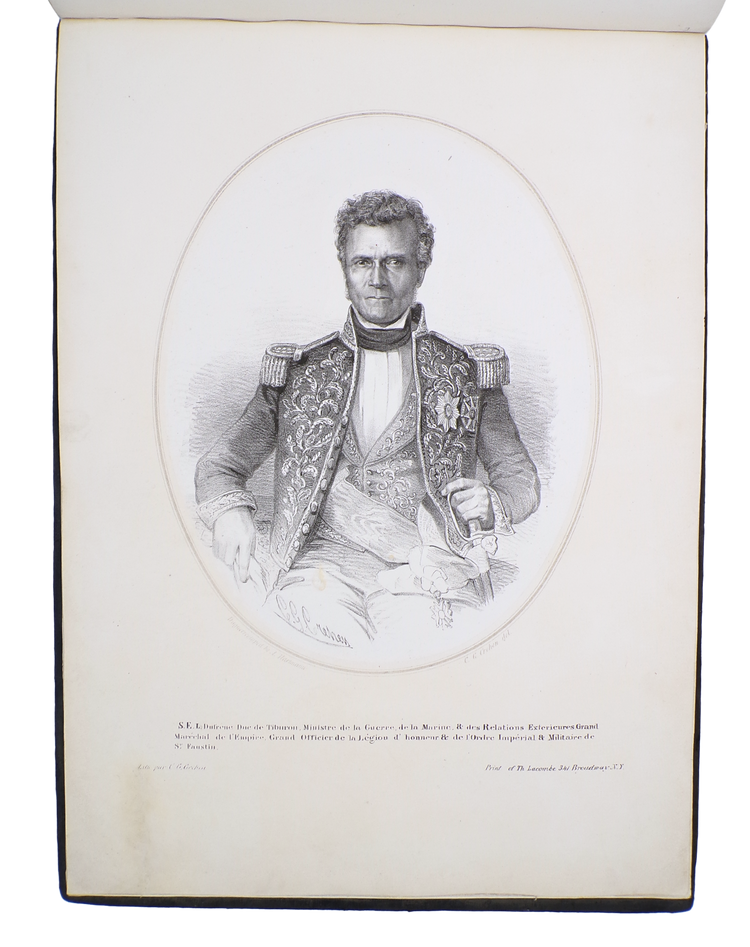


Contact
Email: hugo@artemrarebooks.com
Phone: +31651042297
Visit us on appointment at:
Former US Embassy
Lange Voorhout 102
2514EJ
The Hague (The Netherlands)
Shipping address:
Nannie van Wehlstraat 51
2548MN
The Hague
The Netherlands


